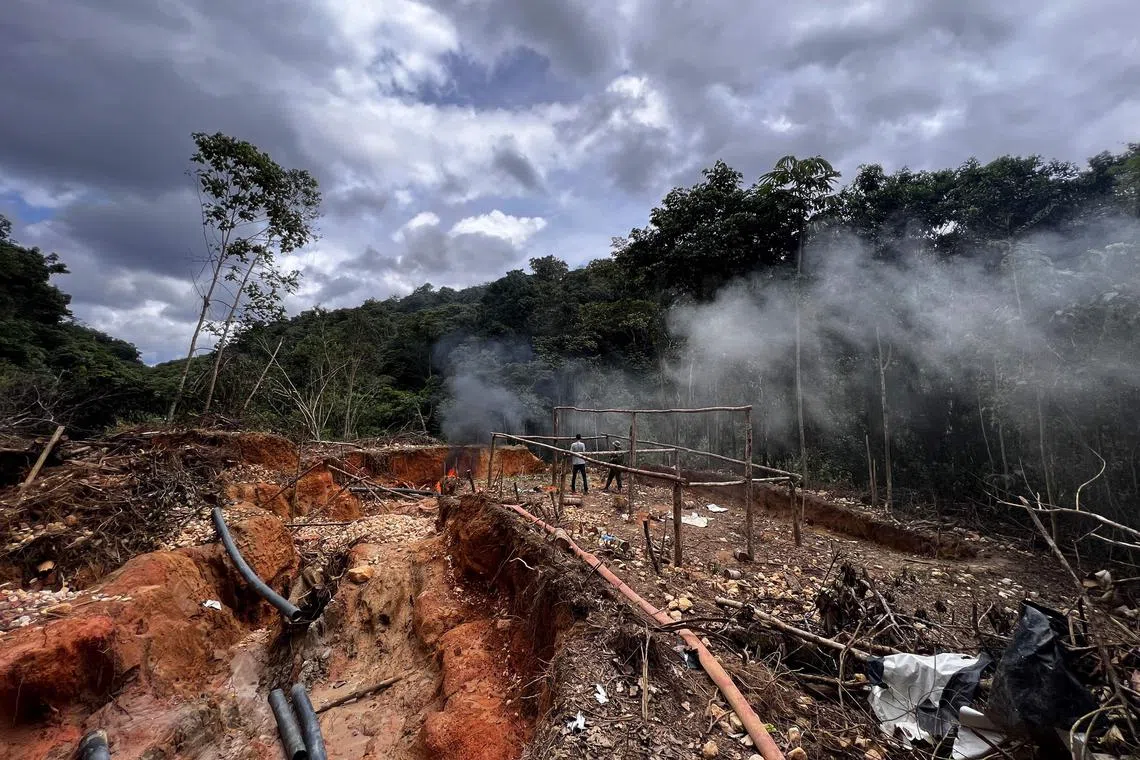Mountain forests disappearing at alarming rate: Study
Sign up now: Get ST's newsletters delivered to your inbox

Key drivers of the loss are commercial logging, wildfires, “slash-and-burn” cultivation and commodity agriculture.
PHOTO: AFP
Follow topic:
WASHINGTON - Logging, wildfires and farming are causing mountain forests, habitat to 85 per cent of the world’s birds, mammals and amphibians, to vanish at an alarming rate, according to a study published on Friday.
Mountain forests covered 1.1 billion ha of the planet in 2000, the authors of the study published in the Cell Press journal One Earth said.
But at least 78.1 million ha – an area larger than the state of Texas in the United States – had been lost between 2000 and 2018, with recent losses 2.7-fold greater than at the beginning of the century.
Key drivers of the loss are commercial logging, wildfires,
Of particular concern, they said, is that heavy forest losses have occurred in mountain areas that are “tropical biodiversity hot spots” – refuges for rare and endangered species.
High elevations and steep slopes have historically restricted human exploitation of mountain forests, the authors said. But they have increasingly been targeted for timber and used for agriculture since the turn of the century.
Commercial forestry was responsible for 42 per cent of mountain forest loss, followed by wildfires (29 per cent), shifting cultivation (15 per cent), and permanent or semi-permanent commodity agriculture (10 per cent), the study said.
Shifting cultivation involves growing a crop on a plot of land for a few years and then abandoning it until it becomes fertile again.
“The drivers are different for different regions,” said Mr Zhenzhong Zeng, a co-author of the study, with wildfires the main cause of loss in boreal forests found in high latitudes.
“For boreal areas, it’s caused by climate change, because there’s an increase in temperature and a decrease in precipitation,” Mr Zeng told Agence France-Presse.
“We have to reduce the use of fossil fuels to slow down global warming.”
Commodity agriculture was a main driver of mountain forest loss in South-east Asia, the authors said.
“People plant more rubber or palm farms to make more product,” Mr Zeng said. “People need to have more land to grow corn to feed their chickens.”
Shifting cultivation is pre-eminent in tropical Africa and South America.
‘Impact is huge’
The authors said the greatest amount of forest loss observed during the study period using satellite data was in Asia – 39.8 million ha – more than half the global total.
South America, Africa, Europe and Australia also suffered significant losses.
“The mountain forest loss in the tropical areas is increasing very fast, much higher than other regions,” Mr Zeng said. “And the biodiversity is very rich there so the impact is huge.”
He added: “For tropical areas, we have to make people live with the forest, not cut the forest.”
Ms Xinyue He, a co-author, said regrowth has been observed in some areas, but it does not always involve native species and is not keeping pace with forest loss.
She said there needs to be greater forest management, including stricter enforcement of laws and regulations. “Protecting areas can help to reduce the loss,” she said. AFP

